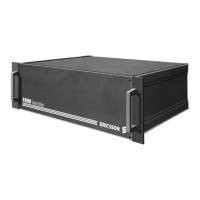LIGHTNING PROTECTION FOR MASTS
4 (8)
Uppgjord (även faktaansvarig om annan) - Prepared (also subject responsible if other) Nr - No.
KL/ECS/S/LT Magnus Lindahl ECS/S/LT-96:5037
Dokansv/Godk - Doc respons/Approved Kontr - Checked Datum - Date Rev File
KI/ECS/S/LTC 1996-06-04 A
Error! Unknown switch argument.
Lightning frequency
The number of days with lightning in a year varies considerably with geographical
location. Local variations occur, depending on differing ground conditions.
Properties of lightning strikes
A lightning strike consists of a number of current pulses of varying strength and
duration. The following are mean values observed in Sweden:
Lightning current, peak value 25 KA
charge 25 AS
duration 0.25 s
Because of the high heating effect at the point of strike, conductors which are of too
low cross-section may burn off and roof sheet metal may burn through. A 10 mm
copper conductor may increase in temperature to around 100C.
Ground conditions
The ability of the ground to carry away and distribute lightning strikes varies
considerably between different places. Consequently, it may be difficult to provide
earth electrodes where conductivity is low.
Inspection of installations
Modifications to, or around, a building or mast fitted with lightning protection may
impair the functioning of the protection system. Such modifications may include, for
example:
sheet-metal work (window-sills, ventilation ducts)
pipework (water, heating systems)
electrical work (changes or additions to the power supply or telephone cables)
The owner of a lightning protection installation is responsible for ensuring that any
work carried out on, or around, the building or mast does not have an adverse effect
on the functioning of the lightning protection. If necessary, additional work should be
carried out in order to maintain the same degree of protection. Further, regular
inspections should be made; the visible parts should be inspected annually and the
buried parts should be checked every 3 - 6 years.
To assist in inspection of the buried part of the installation, there must be drawings
showing the layout. These should be placed in the building, preferably in the central
switchboard.
Choice of materials

